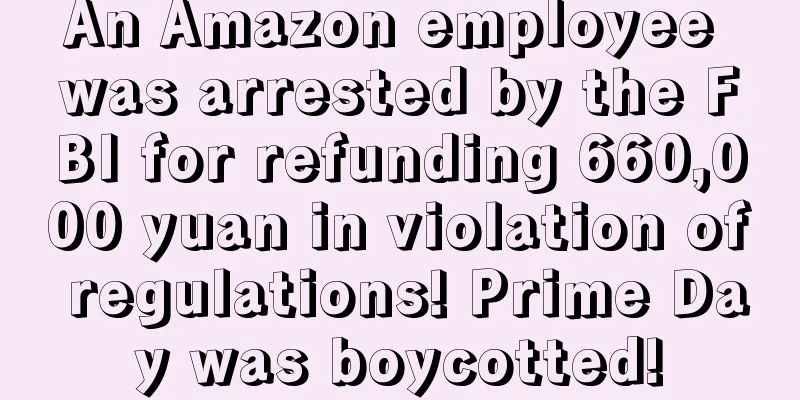Under the Sino-US trade war, sellers suffered three major blows

|
The Sino-US trade war has lasted for more than a year. In the latest round of the trade war, the United States announced an increase in tariffs on $300 billion worth of Chinese products. The trade war between China and the United States has also had an impact on the e-commerce industry. Amazon tool Jungle Scout conducted a survey of sellers to understand the impact of the trade war on them. From the survey, we learned: 72% of sellers reported an increase in the cost of importing products from China in the past 12 months. 77% of sellers said that shipping costs have increased; 51% of sellers consider sourcing products from other countries besides China; A quarter are ready to abandon Amazon business due to increased tariffs. From the above information, we can see that the Sino-US trade war has a great impact on Amazon sellers. The development of the Sino-US trade war In 2017, Trump proposed negotiations on tariffs, and in 2018, the two sides began a trade tug-of-war that lasted more than a year: 2018 On March 22, Trump signed a memorandum to impose tariffs on $60 billion worth of Chinese products. China then retaliated by imposing tariffs on 128 US products. In May, the two sides reached a consensus to suspend the trade war, but on June 16, the United States announced a list of additional tariffs on China, and China also restarted its anti-dumping investigation against the United States. On July 6, the Trump administration officially imposed a 25% tariff on $34 billion worth of goods from China. On September 18, the United States announced that it would increase the scope of Chinese goods subject to a 25% tariff to $50 billion. China also immediately announced that it would impose a 10% or 5% tariff on approximately $60 billion of U.S. goods. On December 1, China and the United States agreed to hold a 90-day negotiation. 2019 On May 5, Trump announced a 25% tariff on another $200 billion. On May 13, China announced that it would impose additional tariffs ranging from 5% to 25% on $60 billion worth of U.S. goods starting June 1. On August 1, Trump announced that starting September 1, 2019, a 10% tariff will be imposed on all remaining Chinese goods worth $300 billion. Afterwards, the Chinese government announced a suspension of purchases of U.S. agricultural products, and on August 24 announced additional tariffs of 10% or 5% on approximately $75 billion of U.S. goods, and resumed additional tariffs on U.S. cars and their parts; and the U.S. also increased the previously imposed tariff rate on $300 billion of Chinese goods to 15% the next day, and the current 25% tariff on $250 billion of Chinese goods to 30% in countermeasures. The impact of tariffs on Amazon sellers Increased procurement costs Jungle Scout conducted a survey of 197 Amazon sellers who source products from China. The survey results showed that due to the Sino-US trade war, 72% of sellers' procurement costs are increasing, with an average increase of 17% per unit, and some sellers said that product costs have increased by 80%. Products with increased costs cover all categories, so it is difficult for sellers to avoid cost increases by purchasing new categories. As costs increase, sellers must make a choice in order to survive: either raise prices and pass the costs on to consumers, or lose their own profits. Some suppliers are willing to bear part of the costs caused by tariffs, and sharing the costs helps maintain business relationships with each other. However, if suppliers are unwilling, small and medium-sized sellers can only place small orders and reduce inventory to maintain business operations in order to reduce costs. The reduction in order volume will ultimately harm the interests of suppliers and sellers. To solve the problem, some sellers choose to purchase products from other countries to avoid tariffs.
51% of sellers are considering purchasing products from other countries, and most sellers still consider purchasing from Asia because the product costs in Asian countries are relatively low due to labor costs and other reasons. Vietnam and India are the sellers' preferred purchasing locations, and 19% of sellers said they would consider moving manufacturing to the United States. Although Trump's goal is to create jobs in the United States, choosing American manufacturing is not a viable option for most sellers. Some product raw materials still need to be imported, and sellers will still be hit by tariffs. Rising freight costs In addition to product costs, sellers’ shipping costs are also increasing. According to the survey, 77% of sellers said that the shipping costs of goods imported from China increased by an average of 17%, and some sellers even said that the costs increased by 200%. This shows that under the pressure of tariffs, third-party freight service providers have also passed on costs to sellers. Sellers leaving Amazon The most significant impact of the tariffs is that 26% of sellers will choose to abandon the Amazon platform completely rather than switch suppliers or let consumers bear the additional costs. Although other sellers can capture this group of customers, it is important to note that tariffs have left these sellers with nowhere to go, which is a devastating blow to small and medium-sized enterprises. The trade war between China and the United States is gradually weakening global economic development. The latest development of the trade war is that China and the United States agreed to hold the 13th round of high-level economic and trade consultations in Washington in early October. This also made the world breathe a sigh of relief. We don’t know what the future will be like, so we can only wait and see. Recommended Reading |
<<: Autumn product selection guide: These products will become hot sellers
>>: The first step to boost sales during peak season: 2019 Halloween product selection guide
Recommend
What is Zilingo? Zilingo Review
Zilingo is a fashion + lifestyle e-commerce platfo...
Difficult to deal with! Sellers are threatened by review agencies that they will destroy their stores if they don’t return the money?
Amazon sellers use the review platform to obtain r...
Amazon automatically throws away sellers' inventory! The new policy in April has been criticized
Amazon recently released a new policy. As the off...
What are the advantages of Amazon short videos? How to promote them?
How to operate the brand promotion video function...
Weak demand and excess capacity mean U.S. express delivery companies are struggling during the holiday season
According to Reuters, in the past few years of the...
Official Amazon product! Free Prime Day marketing tools
After entering July, Amazon began to frequently w...
What is DANA? DANA Review
DANA Wallet is one of the mainstream e-wallets in ...
A new round of consumer law review is coming! Large-scale number scanning has begun
Spring Festival holiday approaching Amazon has sta...
What is Farfetch? Farfetch Review
Farfetch is a global fashion luxury website that c...
What is WishPost? WishPost Review
WishPost is a cross-border e-commerce logistics pr...
What is Amzdoor? Amzdoor Review
Amzdoor focuses on Amazon reviews and provides one...
Inflation and overstocking are inevitable! Holiday season consumption is still difficult to predict
The global retail market has been extremely volati...
Summary of Amazon's daily operation skills
This article mainly shares some of Amazon's s...
What is the potential of Walmart's platform? Grasp the latest sub-advertising trend
Walmart made major adjustments in 2022. Compared w...









